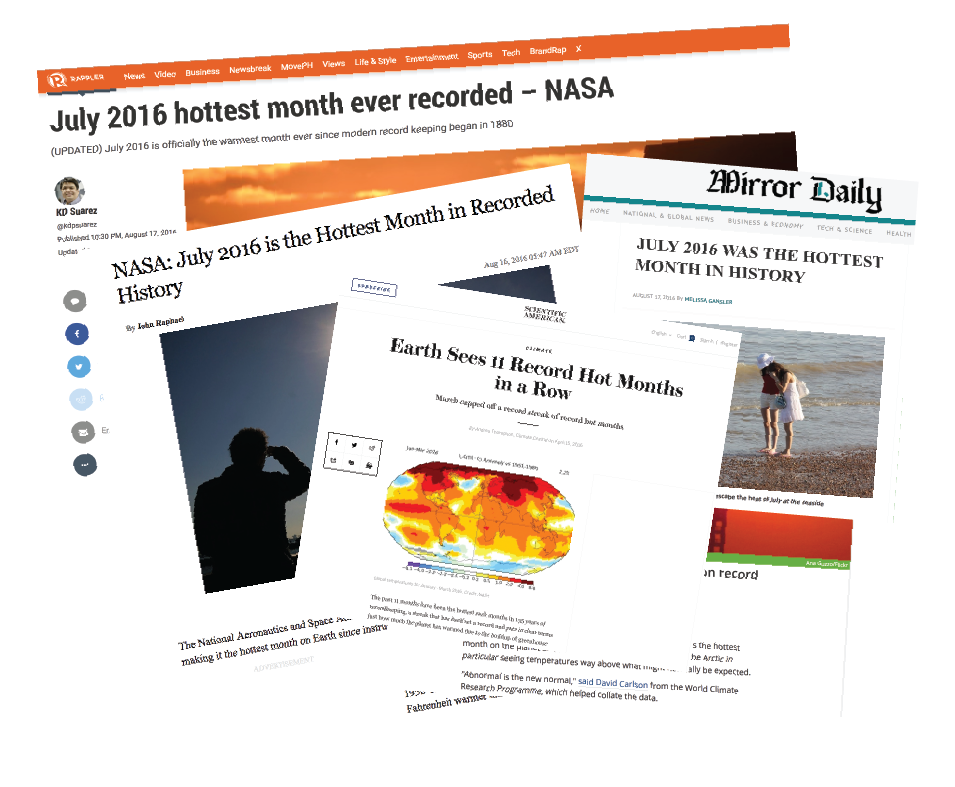 September, 2016
September, 2016
Print and broadcast media and the blogosphere carry urgent news about the climate system: global atmospheric CO2 at record high levels (above 400 ppm), another consecutive month of record warmth in surface air temperatures, recent extreme flood and drought events in many locations (even if the western press focuses primarily on Louisiana), reduced coverage of Arctic sea ice (seriously low but not ‘off the charts’ if you follow the Alfred-Wegener-Institut (AWI) / University of Bremen product), and the list goes on.
Part of the newsworthiness of these indicators lies in their immediacy - yesterday’s CO2, last week’s sea ice extent, last month’s surface air temperature - which in turn derives from our hard won abilities to monitor surface conditions and features in situ and from satellite. But what of the increasing global energy imbalance storing heat in the interior ocean? What about microbial processing of carbon - and its intimate dependence on soil moisture - under tundra vegetation in the interior of thawing permafrost? What about vertical and horizontal changes in water vapour and cloud systems that drive and reflect changes in large scale circulations? What about relatively warm ocean water eroding ice edges from below?
Recent events and conditions remind us that our climate system retains a very strong ability to surprise, as well as to disrupt and displace. Sharpening our forecast skills for ‘surface’ events that we can see requires that we build prediction skill for less visible features. As climate signals emerge from the noise of natural variability, and as extreme events blur distinctions between weather and climate, we need to collectively convert public attention into durable appreciation for and support of the careful, creative and crucial work of the climate research community.
David Carlson, WCRP Director

